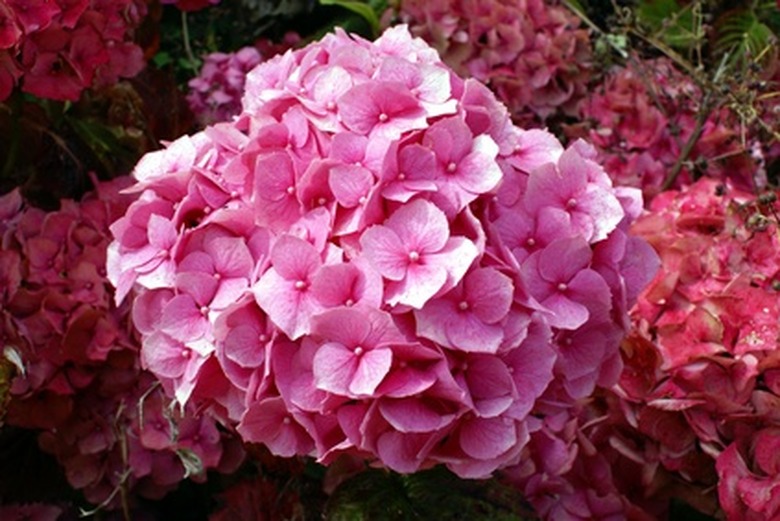How To Split Hydrangeas
Things Needed
- Water
- Shovel
- Compost
- Mulch
A lush and blooming hydrangea can brighten nearly any shady or partly shady area of your lawn or garden, but when the bush starts to get a little too large and blooms actually decrease it may be time to split the plant. A resourceful way to propagate hydrangeas, splitting hydrangeas is not only good for the plant but also gives you free hydrangeas plants which can be used elsewhere in the garden.
Step 1
Water the soil around your hydrangea the day before you want to split it without soaking it so much that the ground will still be saturated the next day.
Step 2
Dig straight down with your shovel starting a foot away from the base of the plant and working your way all the way around to loosen the soil. Dig down by a foot to 18 inches. Work toward the root ball of your hydrangea as you dig.
Step 3
Work to free the roots of the plant as much as possible without severing them as you dig closer toward the plant. Raise the root ball from the ground after you have loosened all the way around it.
- A lush and blooming hydrangea can brighten nearly any shady or partly shady area of your lawn or garden, but when the bush starts to get a little too large and blooms actually decrease it may be time to split the plant.
Step 4
Select the area of the root ball's middle where you want to divide. A smaller plant should be split in half while larger hydrangeas can be split more than once. Put the blade of the shovel up to your selected point and push downward to pierce through the roots.
Step 5
Spread the root ball as needed and continue to push the blade of the shovel through until the two plants are now independent of one another. Divide these two portions into smaller units if you have a larger plant.
Step 6
Plant each new division into its own hole using compost as a filler if needed to secure the plant or replace clay or sandy soils. Spread 1 to 2 inches deep of mulch over the newly planted hydrangeas to keep weeds away and protect the roots from sun damage. Water two to three times a week for the first month.
- Select the area of the root ball's middle where you want to divide.
- Spread the root ball as needed and continue to push the blade of the shovel through until the two plants are now independent of one another.
Tip
For best results, split your hydrangeas in early spring to give each division a strong new start after all danger of frost has passed. If frost threatens, cover your new divisions with a light sheet overnight.
Warning
You may not see blooms the first season on your hydrangea after transplanting, but signs of new growth should signal that the plant is doing well.
References
- "Hydrangeas: A gardener's guide"; Toni Lawson-Hall, Brian Rothera; 2005
- "Reader's Digest Illustrated Guide to Gardening"; Carroll C. Calkins; 1993
